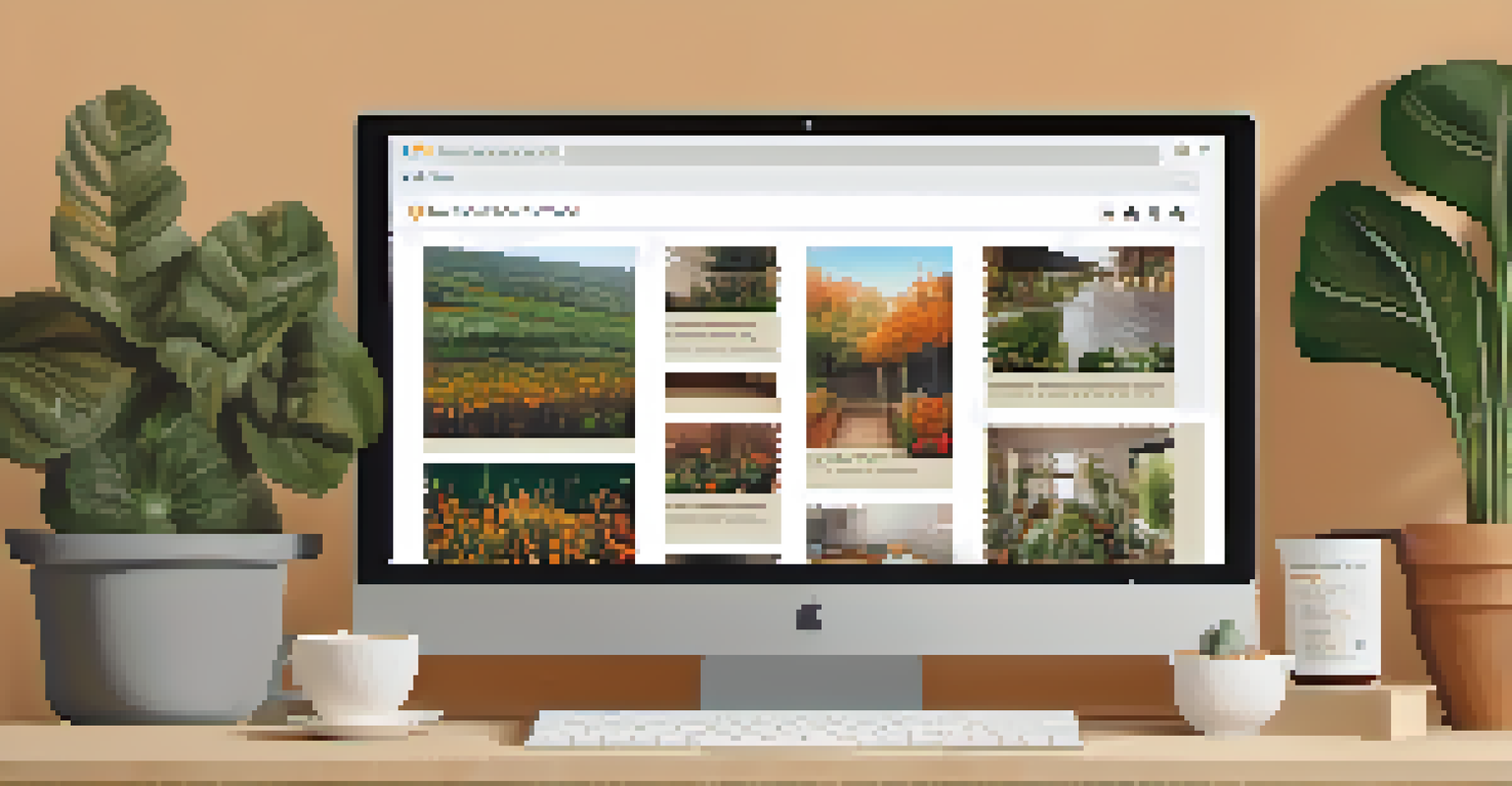Creating Inclusive Digital Spaces: Best Practices

Understanding Digital Inclusivity: What It Means
Digital inclusivity refers to creating online environments where everyone can participate fully, regardless of their abilities or backgrounds. It's about ensuring that technology serves all users, not just a select few. Think of it like a community park: it should have pathways wide enough for wheelchairs and benches that accommodate different heights.
Accessibility allows us to tap into everyone’s potential.
In a world where online interactions are becoming the norm, inclusivity is more important than ever. Imagine trying to navigate a website that is hard to read or understand; it can be incredibly frustrating, especially for people with disabilities. By prioritizing inclusivity, we can create digital spaces that invite everyone to join in.
Ultimately, understanding digital inclusivity is the first step toward making meaningful changes. It means recognizing the diverse needs of users and committing to meet those needs through thoughtful design and content choices. This foundational awareness sets the stage for best practices that follow.
Adopting Accessible Design Principles
Accessible design is about creating digital content that is usable for all people, including those with disabilities. This includes using clear fonts, appropriate color contrasts, and ensuring that images have alternative text descriptions. For instance, imagine a website where the text blends into the background; it wouldn't just be hard for someone with visual impairments to read, but it could frustrate anyone trying to engage with the content.

One effective approach is to follow the Web Content Accessibility Guidelines (WCAG), which provide a comprehensive framework for making content accessible. These guidelines cover everything from text sizing to keyboard navigation, ensuring that no one is left out. By incorporating these principles, designers can create a more user-friendly experience for everyone.
Embrace Digital Inclusivity
Digital inclusivity ensures that online environments are accessible and engaging for everyone, regardless of their abilities or backgrounds.
Remember, accessible design isn't just a checkbox on a list; it's a mindset. When teams prioritize accessibility from the start, they create a more inclusive environment that benefits all users. This proactive approach not only enhances user experience but also builds trust and loyalty.
Creating User-Friendly Navigation and Layouts
A user-friendly navigation system is crucial for inclusive digital spaces. It should allow users to find what they need quickly and easily, regardless of their experience level. Think about how frustrating it is to wander through a maze of links; a clear and logical layout can make all the difference.
Diversity is being invited to the party; inclusion is being asked to dance.
Incorporating features like breadcrumb navigation, search bars, and well-organized menus can greatly enhance user experience. For example, consider an online store where categories are clearly labeled and easy to access; this not only helps users with disabilities but also benefits anyone who values efficiency. Simple design choices can lead to a more enjoyable interaction for everyone.
Moreover, testing navigation with real users can provide valuable insights. Observing how people interact with your site can reveal pain points you might not have considered. By gathering feedback and making iterative improvements, you can create a layout that truly meets the needs of all users.
Utilizing Inclusive Language and Tone
The language we use online plays a vital role in creating inclusive spaces. It’s important to choose words that are respectful and avoid jargon or slang that might alienate some users. Imagine walking into a conversation where you can't understand any of the terms being used; it can feel quite isolating.
Inclusive language also means being mindful of different backgrounds and experiences. Using gender-neutral terms, for instance, can make your content more welcoming to a diverse audience. Additionally, being clear and straightforward helps ensure that everyone can grasp your message without confusion.
Adopt Accessible Design Principles
Implementing accessible design principles, like clear fonts and appropriate color contrasts, enhances user experience for all individuals, especially those with disabilities.
Finally, consider the tone of your content. A friendly and approachable tone can make users feel more at ease, encouraging engagement. By fostering an inviting environment through language, you can help more people feel included in the conversation.
Incorporating Diverse Perspectives in Content Creation
Diversity in content creation involves bringing together voices from different backgrounds, experiences, and perspectives. This not only enriches the content but also ensures that it resonates with a broader audience. Picture a blog that features insights from various cultures; it’s likely to be more engaging and relatable to many readers.
To achieve this, consider collaborating with individuals from diverse communities when developing content. Their unique viewpoints can highlight issues that may otherwise go unnoticed, leading to a more comprehensive understanding of your audience's needs. Representation matters, and it reflects a commitment to inclusivity.
Additionally, showcasing diverse narratives can create a sense of belonging for users who might feel marginalized. When people see themselves represented in your content, they are more likely to engage and contribute to the community. Ultimately, diverse perspectives can transform digital spaces into vibrant, inclusive environments.
Ensuring Continuous Accessibility Testing and Feedback
Creating inclusive digital spaces is not a one-time effort; it requires ongoing commitment and testing. Regular accessibility audits can help identify areas for improvement and ensure that your content remains usable for everyone. Just like maintaining a garden, you need to keep checking in to see what’s thriving and what needs attention.
Gathering user feedback is another crucial aspect of this process. Encourage users to share their experiences and challenges while navigating your site. This firsthand insight can be invaluable in making informed changes that enhance inclusivity.
Engage Diverse Perspectives
Incorporating diverse voices in content creation enriches the material and fosters a sense of belonging among users from various backgrounds.
Finally, staying informed about new accessibility standards and trends can help you keep your digital spaces up to date. As technology evolves, so do the needs of users. By remaining proactive and responsive, you can ensure that your commitment to inclusivity is genuine and effective.
Building Community Engagement and Support
Creating inclusive digital spaces goes beyond just design; it’s about fostering a sense of community. Encouraging user participation and interaction can help build a supportive environment where everyone feels valued. Think of it as a cozy neighborhood where everyone knows each other and feels at home.
One way to promote engagement is through forums or social media groups where users can connect and share experiences. These platforms can serve as a support network, allowing individuals to ask questions and offer advice. When users feel they have a voice, they are more likely to engage with your content.

Additionally, showcasing community stories or user-generated content can enhance the sense of belonging. Highlighting contributions from diverse users not only celebrates their voices but also encourages others to join in. Building an inclusive community online is an ongoing journey that requires dedication and openness.